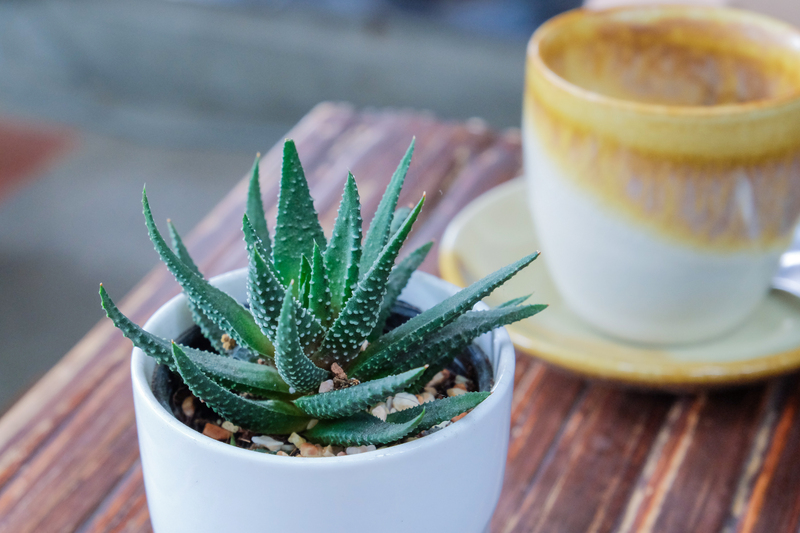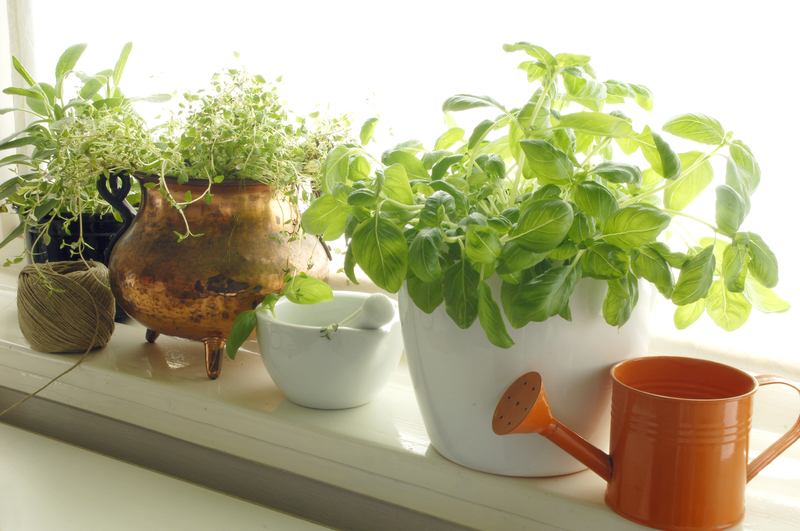Lawn Perfection Unveiled: Starter Secrets to a Healthier, Greener Yard
Imagine stepping onto a plush, emerald lawn--a vivid carpet that's soft underfoot, radiates health, and
makes your home the envy of the neighborhood. Achieving the perfect yard is not just a dream; it's within reach,
with the right starter secrets. Whether you're a new homeowner, a garden enthusiast, or simply someone who
wants to rejuvenate their outdoor space, understanding the foundational techniques will make all the difference.
In this comprehensive guide, we'll reveal the essential steps to start your journey toward a healthier,
greener yard. Unlock insider tips, bust common myths, and master the basics of lawn perfection
for results that last.
Why Pursue the Perfect Lawn?
Before you grab a rake or sprinkle some fertilizer, let's address the value of a thriving lawn:
- Enhances curb appeal and property value
- Improves outdoor living--perfect for relaxation, gatherings, and play
- Promotes environmental wellbeing by filtering pollutants and supporting local habitats
- Reduces soil erosion through dense turf growth
- Creates cooler microclimates around your home during hot seasons
Diving into the secrets of lawn perfection isn't just about aesthetics--it's about creating a sustainable, enjoyable landscape for years to come.

Understanding Your Lawn's Canvas: Soil Health Comes First
At the heart of every lush, green yard is healthy soil. Soil is your lawn's foundation; neglect it, and you risk dull, sparse growth.
1. Test Your Soil
Step one in any yard perfection journey is conducting a soil test. This simple, often overlooked process reveals your soil's pH, nutrient levels, and texture--a vital roadmap to greener pastures.
- pH Balance: Most grasses thrive in slightly acidic soil (pH 6.0-7.0).
- Nutrient Content: Nitrogen, phosphorus, and potassium are critical for healthy turf.
- Texture: Is yours sandy, loamy, or heavy clay? This impacts aeration and watering strategies.
Pick up a soil test kit from your local garden center or send a sample to your county extension office, and let science guide your path to lawn perfection.
2. Amend and Nourish
Once you know your soil's shortcomings, enrich it for a true yard makeover:
- Add organic matter like compost to improve structure and drainage.
- Apply lime to raise pH, or sulfur to lower it, if test results demand.
- Use balanced fertilizers formulated for lawns, following label directions carefully.
- Mulch grass clippings after mowing; they return nitrogen to the earth naturally.
Seed or Sod? Choosing the Right Grass for Your Climate
The next secret to green, healthy turf is selecting a grass variety that matches your region, usage, and personal preferences. Not all lawns are created equal!
Warm-Season vs Cool-Season Grasses
- Cool-season grasses (e.g., Kentucky bluegrass, fescues, ryegrass) thrive in northern states with cold winters and mild summers.
- Warm-season grasses (e.g., Bermuda, zoysia, St. Augustine) excel in southern and transition states, handling intense heat and humidity.
Consult local experts and choose a variety that will perform beautifully with the least intervention.
Seeding Starter Secrets
- Time it right: Early fall or spring is best for cool-season; late spring for warm-season lawns.
- Prepare your soil well: Remove debris, break up compacted ground, and level to avoid future puddles.
- Use high-quality seed: Blends suited for sun, shade, and traffic are available.
- Cover lightly: Use a thin layer of straw or mulch to protect seeds and keep moisture in.
- Water gently but consistently to support germination--aim for moist, not soggy, soil.
Sod Installation Essentials
- Sod offers instant green but needs good preparation and care, just like seed.
- Arrange seams in a staggered pattern to avoid visible lines as it knits together.
- Water immediately and daily for the first two weeks, ensuring roots establish.
Mowing Mastery: The Simple Art of Better Cuts
Too much or too little mowing spells disaster for lawn health. Here's how to mow for a greener, lusher yard:
- Follow the one-third rule: Never cut more than one-third of the grass blade at once.
- Keep mower blades sharp for clean cuts--dull blades tear and stress the turf.
- Vary your mowing pattern each session to prevent soil compaction and uneven wear.
- Adjust mowing height seasonally: Leave it longer in summer for shade and drought resistance; cut a bit shorter before winter, but never scalp!
Regular, mindful mowing supports deep roots, robust growth, and keeps weeds at bay.
Smart Watering: Quench Your Lawn Without Waste
Watering routines often make or break lawn perfection. Too little and you get patchy, dry grass; too much, and disease and rot take hold. Finding the "just right" watering rhythm is crucial.
- Early morning is best--it reduces evaporation and gives grass time to dry, preventing disease.
- Deep, infrequent watering beats shallow, daily splashes: Aim for 1 to 1.5 inches per week.
- Use rain gauges and adjust for natural rainfall.
- Check your soil--if it feels damp an inch down, you can wait another day.
- Smart irrigation systems or soaker hoses can help save water and keep your yard green.
Signs of Over or Under Watering
- Wilting, grayish grass: Thirst signals--time to water.
- Fungal growth, squishy turf: Cut back water and improve drainage.
Balance is your friend for a perpetually green and resilient yard.
Weed and Pest Control Without the Chemicals
A flawless lawn does not happen overnight, but regular, proactive care keeps weeds and pests from taking over. The healthiest yards out-compete invaders naturally!
- Hand-pull weeds as soon as they appear--before they go to seed.
- Apply organic pre-emergent herbicides (like corn gluten meal) in early spring to block crabgrass and dandelions.
- Encourage thick turf with proper fertilizing, seeding, and mowing to crowd out troublemakers.
- Introduce beneficial insects (e.g., ladybugs, nematodes) to control pests naturally.
- If necessary, spot-treat with eco-friendly pesticides rather than blanket applications.
The more resilient and vigorous your lawn, the less it relies on chemicals!
Seasonal Lawn Care Secrets for Long-Lasting Perfection
Spring: The Wake-Up Call
- Rake gently to remove debris and break up thatch.
- Aerate compacted areas to restore airflow and nutrient access.
- Apply fertilizer and pre-emergent weed control--timing is crucial.
- Inspect for winter damage and re-seed as needed.
Summer: Maintenance Mode
- Water deeply and less often, raising mower height to help lawns withstand heat.
- Spot treat weeds and pests immediately.
- Sharpen mower blades frequently and avoid mowing during midday heat.
Autumn: Prepare for Dormancy
- Overseed thin areas to outpace weeds next year.
- Fertilize with a slow-release blend for root strength over winter.
- Keep raking leaves to prevent smothering.
Winter: Rest and Observe
- Avoid heavy traffic on frozen turf to prevent compaction.
- Maintain equipment so you're ready for spring's first cut.
Common Myths Busted: Debunking Lawn Perfection Misconceptions
- Myth: "More fertilizer means a greener lawn."
Reality: Over-fertilizing burns grass and pollutes local waterways. Follow tested recommendations! - Myth: "Cutting grass short means mowing less."
Reality: Scalping weakens turf, invites weeds, and leads to brown patches. Stick to ideal mowing heights. - Myth: "All lawns need to look like golf courses."
Reality: Natural, eco-friendly lawns with some diversity require less maintenance and can be just as beautiful. Embrace wildflowers, clover, and other beneficial plants in moderation for pollinator support.
The Perfect Lawn Mindset: Enjoy the Journey
Yard perfection is not a one-time event--it's an evolving partnership between you, your soil, the seasons, and nature. Embrace imperfections as learning opportunities, and treat lawn care as a rewarding routine rather than a daunting chore.
- Stay curious: Observe, experiment, and tweak based on the results you see.
- Think sustainably: Use eco-friendly products, conserve water, and recycle natural materials.
- Celebrate small victories: Every patch of new growth or weed-free spot deserves a little pat on the back.
- Share the joy: Invite friends, family, and neighbors to enjoy your green oasis and exchange tips.

Starter Secrets Recap: Your Blueprint to Lawn Perfection
- Test and improve your soil--healthy roots mean healthy turf.
- Select the right grass for your region and lifestyle.
- Sow or lay sod at the optimal time and take care during establishment.
- Mow smarter--not harder--for denser, healthier growth.
- Water deeply, not daily, to encourage robust root systems.
- Prevent weeds and manage pests organically for a natural approach to perfection.
- Give season-specific care to keep your yard looking perfect, year-round.
Conclusion: Green, Healthy Lawns Start with a Single Step
Your journey toward lawn perfection is an investment in beauty, health, and lasting value for your home.
Armed with these starter secrets, you can transform any patchy, uneven ground into a thriving, vibrant yard
that welcomes barefoot adventures, garden parties, and peaceful moments alike.
Commit to smart, sustainable care--all it takes is a little knowledge and consistency, and
the secrets to a healthier, greener lawn will be yours.